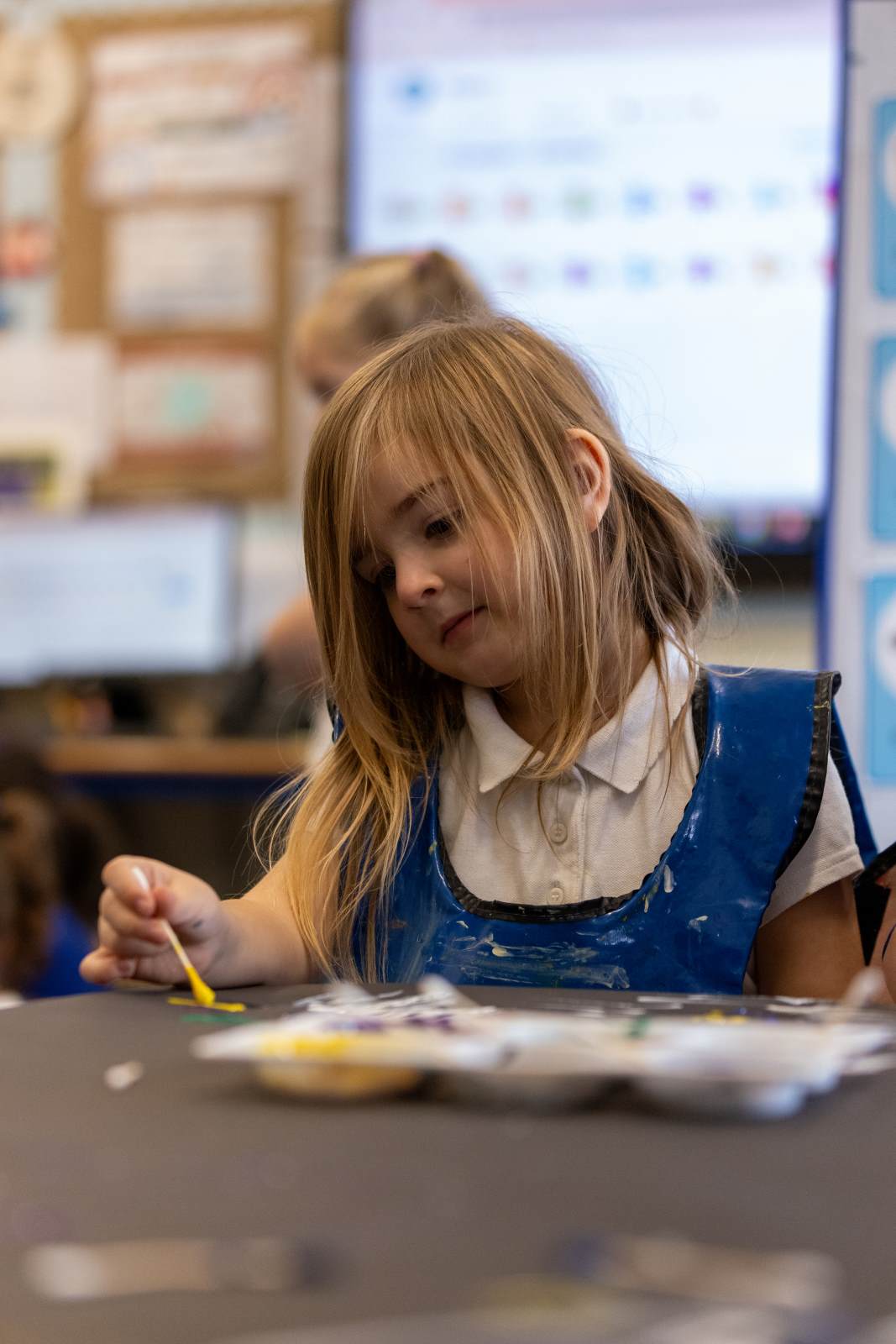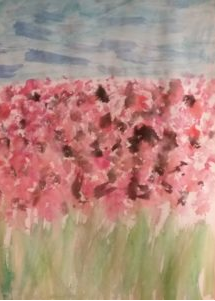Art & Design
Please click HERE to see an overview of what Art & Design is taught in each of the year groups.
Subject Intent
 At Whitehill Primary School, we value Art and Design as an important part of the children’s entitlement to a broad and balanced creative curriculum. Art allows our children to make connections and explore the world around them, whilst also contributing to the development of the child emotionally, aesthetically, spiritually, intellectually and socially. We teach Art and Design with an attitude of non-judgement, a belief that mistakes are to be celebrated, learned from and used. A belief that creative potential is inside everyone and can be found everywhere. We celebrate the process as well as the ‘finished’ artwork.
At Whitehill Primary School, we value Art and Design as an important part of the children’s entitlement to a broad and balanced creative curriculum. Art allows our children to make connections and explore the world around them, whilst also contributing to the development of the child emotionally, aesthetically, spiritually, intellectually and socially. We teach Art and Design with an attitude of non-judgement, a belief that mistakes are to be celebrated, learned from and used. A belief that creative potential is inside everyone and can be found everywhere. We celebrate the process as well as the ‘finished’ artwork.
Our Art curriculum provides children with opportunities to develop their skills using a range of media and materials and encourage children’s critical abilities and understanding of their own and others’ cultural heritages, through studying a diverse range of male and female artists.
Aims & Expectations

At Whitehill Primary School our aims are:
*To enable all children to have access to a varied range of high quality art experiences.
*To provide an imaginative, innovative and co-ordinated art programme which will foster enthusiasm for art and design amongst all the children.
*To foster an enjoyment and appreciation of the visual arts and a knowledge of artists, craftspeople and designers, through links with the local and wider multicultural community.
*To stimulate children’s creativity and imagination by providing visual, tactile and sensory experience.
*To help children explore the world at first hand, using all their senses and experimentation, and so gain knowledge and understanding of the world in which they live.
*To develop children’s understanding of colour, form, texture, pattern and their ability to use materials and processes to communicate ideas, feelings and meanings.
*To inspire confidence, value and pleasure in art.
*To cultivate children’s aesthetic awareness and enable them to make informed judgements about art and become actively involved in shaping environments.
*To teach children to express their own ideas, feelings, thoughts and experiences.
*To develop children’s design capability.
*To enhance children’s ability to value the contribution made by artists, craft workers and designers and respond critically and imaginatively to ideas, images and objects.
Inclusion & Equal Opportunities
Art and Design forms part of the school’s curriculum policy that provides a broad and balanced education for all pupils, whatever their ability and individual need. Staff strive to meet the needs of all pupils with special educational needs, disabilities, special gifts and of those learning English as an additional language. We recognise the fact that we have children of differing ability in all our classes, and ensure that all children are able to access the art curriculum and support is provided through differentiated resources and focus activities where need is identified to both support and challenge students within their work.
Parental Involvement & Wider Community Links
At Whitehill Primary School we enjoy taking part in workshops and learning experiences in the wider community; through which we also make cultural links. We welcome the celebration of art through different mediums at Whitehill including: celebration galleries, work home, and social media presentations.
People with an interest, or expertise, in a particular topic or area of art could be invited into school to work with the children. These might be parents, grandparents, other family members, neighbours or representatives of the local community.
Resourcing, Health & Safety Considerations
There are a wide range of resources to support the teaching of art and design across the school. All classes have a range of basic resources kept in the classroom; large bottles of paint and some other equipment are kept centrally. Visits are planned to enhance learning and give hands-on activity.
At all times, children will be taught how to care for and handle equipment and media safely and with respect. When working with tools, equipment and materials, in practical and in different environments, including those that are unfamiliar, pupils will be taught:
- About hazards, risks and risk control;
- To recognize hazards, assess consequent risks and take steps to control the risks to themselves and others;
- To use information to assess the immediate and cumulative risks;
- To manage their environment to ensure the health and safety of themselves and others;
- To explain the steps they take to control risk.
Monitoring
Each child has an art sketchbook which serves as a cumulative record of their work and is passed on to the next teacher at the end of each year. Samples of children’s work are also collected.
Class teachers will complete a Planning Sheet that will act as a termly record of work covered. Monitoring takes place regularly through sampling children’s work, teacher planning and lesson observations. Simple assessments are recorded at the end of each unit identifying those children who are working below, at or above age related expectations.
The Art subject lead conducts regular and robust monitoring activities including learning walks, a book look and data analysis to gauge the impact of our Art and Design curriculum, in addition to reviewing the curriculum to ensure that it meets the needs of all learners. Staff training is provided when necessary and data findings are shared with whole school staff to address gaps and improve provision for all pupils.


